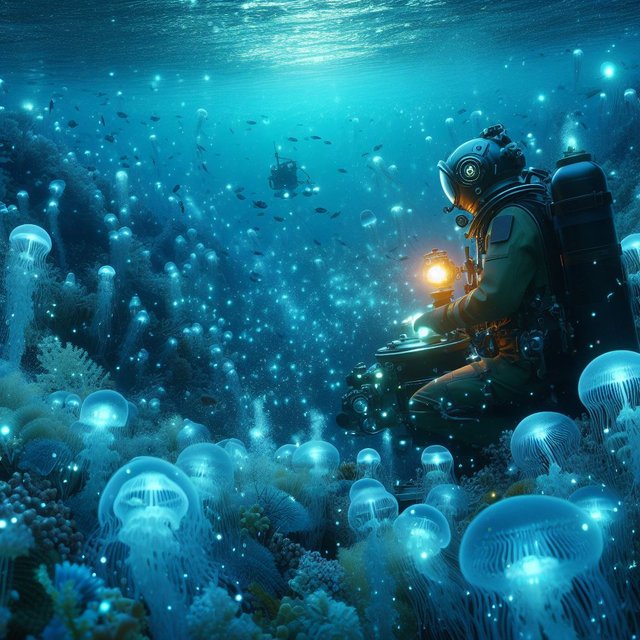Introduction:
Bioluminescence, the ability of living organisms to produce light, has fascinated scientists and nature enthusiasts for centuries. From the depths of the ocean to dense forests, bioluminescent organisms captivate with their ethereal glow. This article delves into the enchanting world of bioluminescence, exploring its mechanisms, ecological significance, and some of the most fascinating creatures that harness this remarkable ability.

Understanding Bioluminescence:
Bioluminescence occurs through a chemical reaction within specialized cells called photophores. These cells contain luciferase enzymes that catalyze the oxidation of a light-emitting pigment called luciferin, producing light as a byproduct. In some organisms, such as fireflies, this light production serves as a form of communication, attracting mates or deterring predators. In others, like certain deep-sea creatures, bioluminescence aids in camouflage or luring prey.
Ecological Significance:
Bioluminescence plays diverse roles in ecosystems, from helping organisms locate food to serving as a defense mechanism. In the ocean, bioluminescent plankton create mesmerizing displays known as "milky seas" or "sea sparkle," which can stretch for kilometers and are visible from space. These displays not only attract predators to the plankton's predators but also provide camouflage for larger marine animals by masking their movements.
Fascinating Bioluminescent Organisms:
Fireflies (Family Lampyridae): These iconic insects are perhaps the most well-known bioluminescent organisms, with their enchanting glow often observed on warm summer evenings. Fireflies use their flashes to signal potential mates, with each species having its unique flashing pattern.
Deep-Sea Anglerfish (Family Ceratiidae): Found in the depths of the ocean, anglerfish possess a bioluminescent lure protruding from their heads. They use this lure to attract prey in the darkness of the deep sea, making them formidable predators in their environment.
Dinoflagellates: These single-celled organisms are responsible for the bioluminescent displays seen in the ocean. When disturbed, dinoflagellates emit a blue-green light, creating stunning visual spectacles in the water.
Glowworms: The larvae of certain species of beetles and flies, glowworms emit a soft glow to attract prey into their sticky silk threads. Found in caves, forests, and other dark habitats, glowworms create enchanting scenes reminiscent of starlit skies.
Conclusion:
Bioluminescence remains one of nature's most enchanting phenomena, showcasing the ingenuity and diversity of life on Earth. From the depths of the ocean to the darkest corners of forests, bioluminescent organisms continue to inspire awe and wonder, reminding us of the beauty and complexity of the natural world.